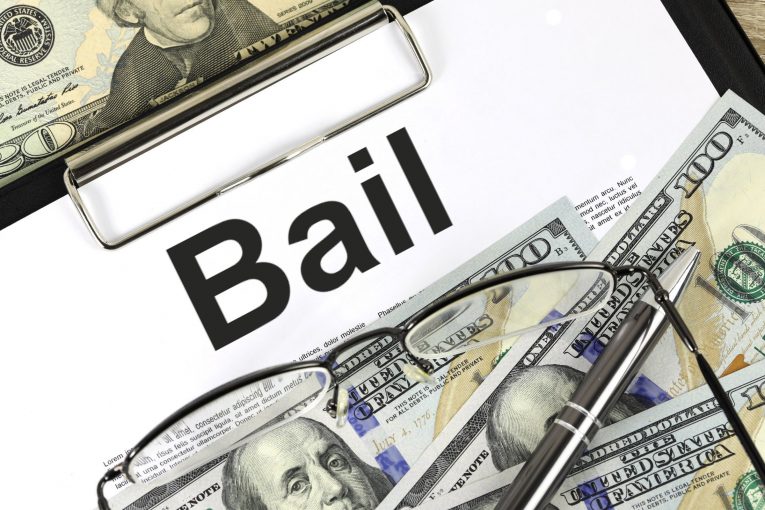


This work is licensed under a Creative Commons Attribution-ShareAlike 3.0 Unported License.
By Madi Whittemore
LOS ANGELES, CA – Three California Superior Court judges (two retired and one active) with more than 90 years of collective experience published a Los Angeles Times opinion piece this week that focused on the backlash judges receive when they “let the accused out” of custody by reducing bail or allowing the accused to post bail at all.
Judges Brett R. Alldredge (Tulare County Superior Court), J. Richard Couzens, retired (Placer County Superior Court) and Sherrill A. Ellsworth, retired (Riverside County Superior Court) said because of public misconceptions about bail allowing alleged criminals to run free in the streets, the bail process itself sabotages the public’s trust in the rule of law.
There are 58 superior courts in the state of California and while each one may be more or less advanced on their path to reforming the pretrial justice process to become more fair, just, and evidence-based, each court must abide by and adhere to what the California Constitution states regarding detention (being held in jail), they explained.
The judges added, under the California Constitution, detention is meant to be the limited exception, not the rule—meaning that detention should only be used when absolutely necessary for an accused person who does pose a threat to public safety.
“In California, bail is the right of an arrested person to be released prior to trial on the least restrictive terms and conditions that adequately protect the safety of an alleged victim and of the public at large, as well as prevent the person’s flight to avoid prosecution. That right is enshrined in the California Constitution and guaranteed to all arrested individuals.
“The limited exception is when there is substantial evidence that the person committed the charged crime and the court finds by clear and convincing evidence that their release likely will result in great bodily harm to others, or the person has made threats against others they are likely to carry out if released,” wrote the judges.
They added in the LA Times Opinion, “In other words, under state law, bail is a mechanism to bring about conditional release, not to keep a person charged with a crime in custody.”
Once posting bail, the accused is on conditional release, meaning the accused is no longer behind bars but must not do anything to threaten public safety of any alleged victims or the public which includes committing any further offenses, the judges said, noting the accused must also be responsible for returning to court and must not by any circumstances flee to avoid prosecution—otherwise the accused will receive a failure to appear and will end up in custody again.
“Setting monetary bail at such high amounts that it becomes a de facto detention is an abuse of this system. In fact, in 2021, the California State Supreme Court unanimously ruled that such a practice is unconstitutional.
“Any pretrial detention must be ordered by a judge based on an individualized assessment, not simply the charged crime, because people incarcerated pending trial ‘unquestionably suffer,’ as California state justices previously termed it, a ‘direct grievous loss’ of freedom, and detention prior to trial is, according to the Supreme Court, ‘the carefully limited exception,’” the judges wrote.
Just recently in 2021, the California State Supreme Court, said the judges, unanimously ruled that knowingly setting high bail just so that possible offenders are forced to remain in custody is unconstitutional, and that before deciding to keep an accused in detention, judges must individually analyze and assess the evidence itself that is presented in an accused’s case—not just the crime itself.
The court also noted that detention prior to trial is considered “the carefully limited exception,” also acknowledging the fact that the people who fall under these limited exceptions “unquestionably suffer” because they experience a sudden and “direct grievous loss” of freedom.
In fact, the three judges in the LA Times piece note that there are several relevant studies that show how, when offenders who do not pose a threat to public safety are released rather than held in detention, release actually promotes public safety rather than threatens it.
In fact, one of these studies was done from 2019 through 2022 by the California Judicial Council after $68 million was approved to fund a pretrial-release pilot program. For these four years, the council monitored the release practices and pretrial assessments of 16 California trial courts and over 422,000 people from arrest to trial.
These 422,000 people were released from custody on conditional release and were kept track of to see whether or not they were arrested for any new crimes and whether they appeared at their future court dates.
The results of the study, the three judges explain, showed that when people charged with misdemeanors were released before trial, there was a significant decrease in both rearrest rates and failures to appear at court dates.
While results, said the judges’ Op-Ed, did find that there was a slight increase in failures to appear of people charged with felonies, the study found that this was due to courts not having effective reminder systems for when accused persons need to return back to court.
To counter this issue, trial courts began to implement functional and modern reminder systems that notify people through manual and automated phone calls and text messages. For example, in Alameda County, only 47 percent of people released without having to post money bail had actually appeared at their assigned court dates.
But, according to the judges, after Alameda County constructed and implemented a reminder system through texts and phone calls, the appearance rate skyrocketed to 87 percent. Overall, this study shows how being released prior to trial with the assistance of proper reminder systems can ensure that accused persons appear in court on their own recognizance. By the end of the study, 14 out of the 16 pilot projects had developed a reminder system and other states found encouragement to expand their conditional pretrial releases.
The judges concluded, “The misunderstanding of bail as a tool to incarcerate people before trial has left in its wake a simultaneously unsafe, unfair and unjust legacy. No arrested individual who is judicially determined to pose a substantial threat should ever be allowed to buy their unconditional release. Similarly, no arrested person should ever be detained simply because they cannot afford monetary bail.
“Everyone is entitled to a timely, individualized release decision that is conducted with due process in open court with attorneys present, guided by constitutional guarantees and exclusively made by a judge in accordance with the law. Understanding and honoring this constitutional right of all our citizens also helps keep Californians safer.”




